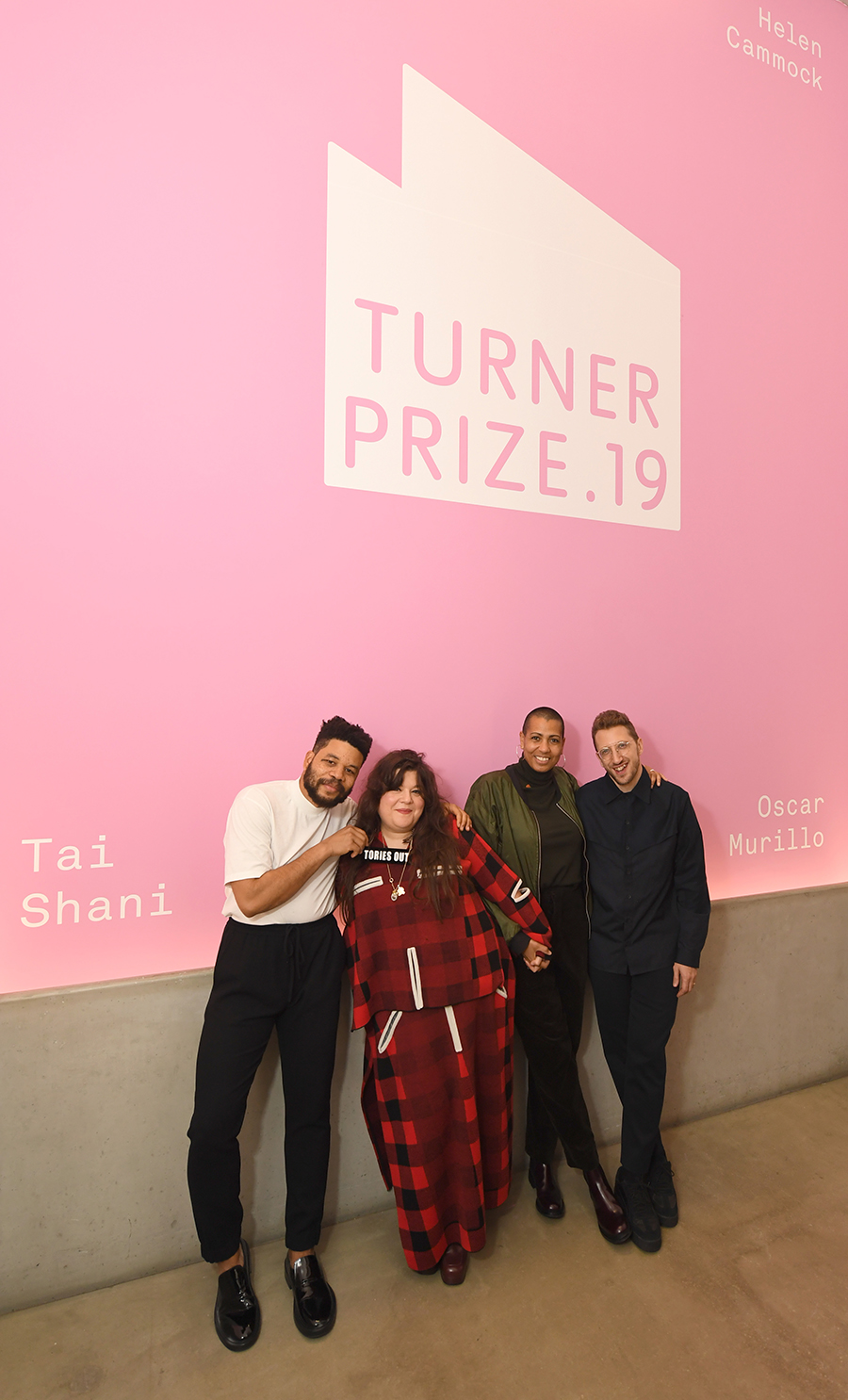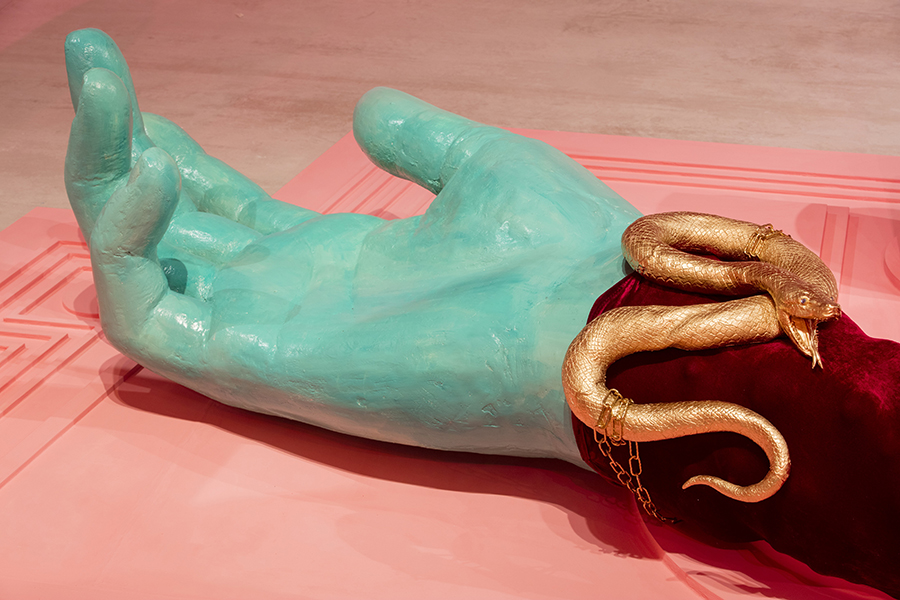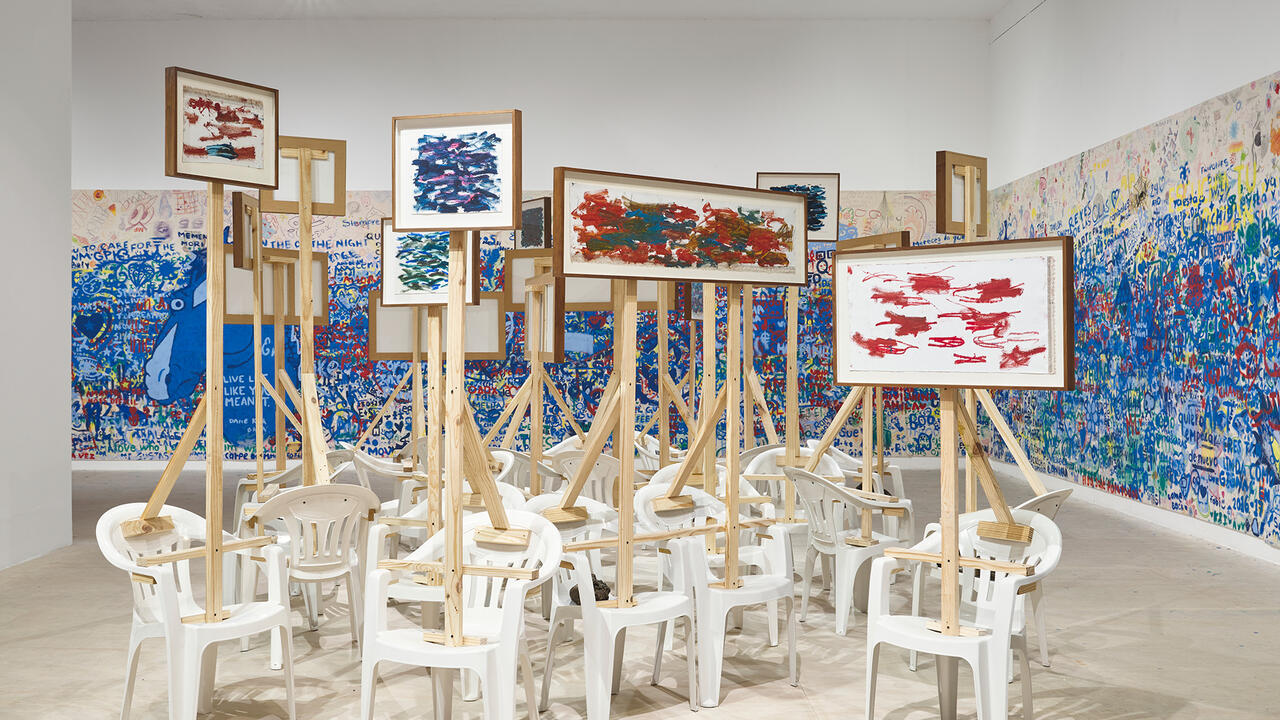Turner Prize 2019: Can the Art World Call an End to Competition Culture?
This year, all the shortlisted artists were named joint winners – what to make of this act of (institutionally approved) subversion?
This year, all the shortlisted artists were named joint winners – what to make of this act of (institutionally approved) subversion?

In Lewis Carroll’s novel Alice’s Adventures in Wonderland (1865), a dodo oversees a curious contest. Arranged into a ‘a sort of circle (the exact shape doesn’t matter)’, the competitors ‘began running when they liked, and left off when they liked, so that it was not easy to know when the race was over’. Half an hour later, the flightless bird calls proceedings to an arbitrary stop, and after ‘a great deal of thought’ announces: ‘Everyone has won, and all must have prizes.’ A nonsensical satire of zero-sum games (not least British first-past-the-post parliamentary elections), in recent days Carroll’s vision has taken on new resonance. For the first time in its 35-year history, the Turner Prize has been awarded not to a single winner, but to all four artists on the shortlist.

Some background: in advance of the prize-giving ceremony on 3 December, the nominees – Lawrence Abu Hamdan, Helen Cammock, Oscar Murillo and Tai Shani – wrote to the judges asking that they be viewed as a ‘collective’, from which no one victor could emerge. ‘The politics we deal with differ greatly,’ they argued in their letter. ‘For us, it would feel problematic if they were pitted against each other, with the implication that one was more important, significant or more worthy of attention than the others.’ Acknowledging this ‘bold statement of solidarity and collaboration in these divided times [which] reflects the political and social poetics we admire and value in their work’, the judges abided by the artists’ request and, like Carroll’s dodo, named the entire shortlist as joint winners.
What to make of this act of (institutionally approved) subversion? There are echoes, here, of Helen Marten’s decision to share her winner’s cheques for the Turner Prize and the Hepworth Prize for Sculpture with her fellow nominees in 2016, or of Theaster Gates announcing ‘Let’s split this motherfucker!’ when he won the Artes Mundi prize the previous year. We might also consider it in light of this year’s Booker Prize, which its jury (against explicit instructions from the organizers) awarded to both Bernadine Evaristo’s novel Girl, Woman, Other (2019) and Margaret Atwood’s The Testaments (2019). The move was interpreted in some quarters as a refusal to choose between two equally worthy recipients; in others, it was seen as an awkward fudge – not least because it meant that the relatively unknown Evaristo, the first black woman to win the prize, had to share it with a white writer who enjoys global fame and who had already won the award for the Blind Assassin (2000). All of this seems to indicate, if not an outright rejection of the competitive cultural award, then at least a questioning of its assumptions by both nominees and jurors.

Writing on the 1991 Turner Prize in the first issue of frieze, Stuart Morgan observed: ‘Artists are not in competition with each other but with themselves and the past.’ Anybody with more than a passing interest in contemporary art knows this to be true. Judging one practice against another is often an implausible task, akin to comparing not so much apples with oranges as apples with zebras, or parallelograms. What the Turner Prize offers shortlisted artists, then, isn’t a settled verdict on their work (perhaps not even art history can do that) but the opportunity to secure scarce and often unfairly distributed resources in the here and now: money and, above all, attention. Having served on numerous prize juries myself, I’m aware that there’s more at play than aesthetic and critical discrimination – not least the (often coded) consideration of whether a win might mean more to, say, a painter represented by a blue-chip gallery or to a performance artist who seems to survive on the occasional grant, precarious teaching gigs and thin air.
For Turner Prize jurors, there is surely the added issue of how to keep a once-radical, now-rather-ageing brand fresh (an impulse that was widely believed to be behind the apparent category error of awarding the 2015 Prize to the architecture practice Assemble). This is not to accuse the 2019 jury of a dereliction of their duties, only perhaps of a kind of benign opportunism. When they received the letter from the ‘collective’, with its plea to reward ‘commonality, multiplicity and solidarity’, it’s easy to imagine them breathing a sigh of relief. It remains to be seen whether their decision will render future iterations of the Turner Prize as dead as, well, a dodo. Does the dictum ‘everyone has won, and all must have prizes’ only apply to the specific circumstances of 2019? Or should we place the competition, and others like it, on extinction watch?























